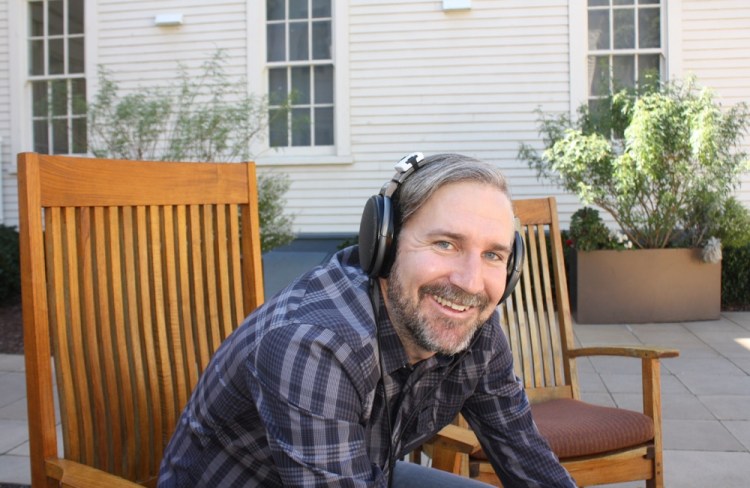Dysonics is releasing its Rappr immersive 3D audio environment for headphones. You could think of it as virtual reality, but for audio. Even though you are wearing headphones, the sound comes at you from different directions, just like in real life.
The Rappr works with all headphones to seamlessly produce 3D audio for everything you listen to, including Spotify, Netflix, iTunes, Hulu, YouTube, and Pandora.
The Rappr technology consists of an app, some sensor hardware, and playback software. It runs on the Mac OS X and captures the experience of listening to premium speakers in the sweet spot of a room, just in your headphones. Robert Dalton, chief technology officer at Dysonics, said in an interview with VentureBeat that the result is the cleanest, richest, and most realistic headphone audio possible.
It gives you a sense of “being there,” with a more lifelike audio reproduction on headphones. In creating the Rondo Motion technology, the company hopes to bring innovation to audio headphones, which haven’t changed much since the 1990s.
I tried it out, and it worked well. It made me look around to see what direction the sounds were coming from. You can, for instance, listen to an orchestra and try to figure out where the violins or trombones are.
You can also get it in some public places. Bjork, the Icelandic performance artist, used the Rappr with headphones in an exhibit at the New York Museum of Modern Art. The exhibit runs through June 7, 2015. Bjork’s exhibit ties the visuals to the audio, so you hear the appropriate sounds when you are looking at a particular part of the exhibit.
“Headphones are now the most widely used form listening to media, and yet the core headphone listening experience has changed very little over the years,” said Dalton. “Rappr represents a big shift by taking traditional two-channel headphone audio and really opening it up, making for a much more lifelike and full listening experience.”
Dysonics combines software smarts and hardware together. The hardware includes a motion-sensing chip with a three-axis accelerometer and a three-axis gyroscope. That enables the chip, which straps onto any headset, to sense both rotation and acceleration. A low-energy Bluetooth 4.0 component wirelessly transfers that data to your listening device, such as an iPhone. A free Apple iOS app, dubbed Rondo Player for iOS, takes the sensor data and mixes it with the music, creating a file in the Rondo format. When you listen to your music, it has an added 3D spatial quality.
Rappr has a user interface that lets you toggle between crafted and tested presets, or create your own. It takes flat, traditional stereo and “spatializes” it, or makes it sound like it is coming at you from three dimensions. For a movie, it takes the flat stereo sound and spatializes it across three channels. And for surround sound, it takes stereo and 5.1 channels and outputs spatialized 5.1 surround sound. It works for games as well.
If you want to customize your sound environment, you can use the Rappr adjustable sound ring to modify the distance between you and your virtual speaker setup. You can “upmix” all songs, movies, and games to 5.1 surround sound in real time.
“Once you start listening, it’s hard to go back to older listening technology,” Dalton said.
The Rappr pairs with the RondoMotion sensor, a Bluetooth wireless motion sensor that you attach to the band that connects your headphones. That gives the Rappr the ability to track the exact position of your head, and change the sound relative to your head movement.
Dysonics’ core team has been researching human audio perception and spatial sound capture and reproduction for the past 15 years. In 2012, the company spun out of the University of California at Davis technology incubator, the Engineering Translational Technology Center, to bring the tech to the market. Ralph Algazi, cofounder and president of Dysonics, is professor emeritus and the former head of the electrical engineering and computer science school at UC Davis.
Dalton said that the company has more plans for 3D audio products in the future. You can figure it will be important to technologies like virtual reality, which puts you in the center of a virtual world visually. Dysonics can add the 3D audio for that kind of experience.
“There’s a lot of companies looking at this,” said Dalton. “Other companies enter on the video side. But audio is a much more difficult problem to solve. This is our patented technology and design.”





